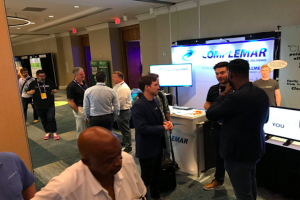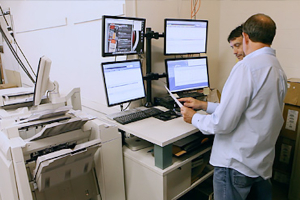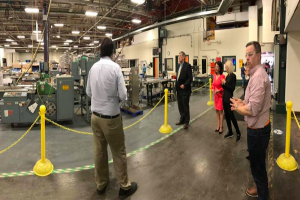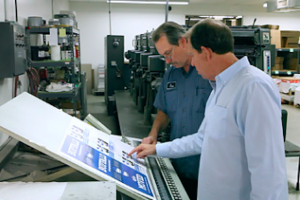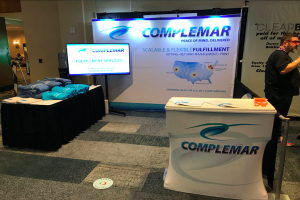Finding the Right Fit
Tuesday, 22 September 2020I love shopping. When I tell people that shopping is one of my favorite things to do, they are under the impression that I must spend a lot of money. Not true. To me, “Shopping” does not mean “Buying”. For me, it means Searching, Evaluating, Comparing, Analyzing…., and yes, sometimes buying in the end. But I like to see what my options are, so I know that in the end I’ve made the right decision, and gotten the right style and fit. I’ve found that perfect item I was looking for and that I won’t regret that purchase later on. That is important. After all, who likes to have buyer’s remorse, or worse yet, have to return things to the store? And it's not fun to pack it up and ship it back. It causes a lot of extra work if you don’t do your homework on the front end. I’m not an impulse purchaser. I’m more like a “weigh my options” type of buyer. I rarely return things (unless I am buying for someone else and the size is wrong).
This same methodology can apply to a client relationship. All customers are not a good fit. We may want them to be. They may want to be. But sometimes, we should just politely decline to pursue that partnership. Is it disappointing? Yes. But the pain later on when they are disgruntled is much worse, and can cause future losses for your business. Ending on a sour note, or getting a bad review from this customer, is a terrible outcome - especially one that should never have been yours in the first place. This is not what you want to happen, and it can be avoided by some pre-planning (my version of shopping) upfront.
Find the Right Customer that Matches your Business Model
- Search for clients that have needs that match with your strengths
- Evaluate how you can help them grow, while still making a profit
- Compare your competitors, and new technology to see where you have gaps & opportunities
- Analyze whether the cost outweighs the benefit of taking on this customer
Following these guidelines will help you to avoid buyers’ remorse. More importantly, it will save you time and money. Wasting months vetting, onboarding, and executing your project plan just does not make monetary sense. If the relationship does not make both parties happy – then it is doomed from the beginning. (Customer is miserable and ends the contract = the dreaded store return)
- You want to create a partnership that works for both parties.
- One should not always be making concessions.
- Clear Communication is the Key to Happiness – Discuss concerns and fears
- Set realistic expectations for the relationship – no one is perfect and stuff happens
- Have a contingency plan – plan for the unexpected
Finding the right customer that fits your needs while matching their own is not a perfect science. It is a combination of hard work and luck. It is akin to looking for the perfect handbag- just the right shade of tan. It matches most outfits but is not boring, dull, or dowdy. You can go to 20 stores and search 50 websites, and then, bam, you find it when you are not looking.
So keep looking for the right customer – you will find them eventually and the search will ultimately pay off.
3 ways to increase your profits and efficiency when selling on Amazon
Tuesday, 15 September 2020Amazon dominates eCommerce. The selling platform makes up about 38 percent of online retail sales (eMarketer, May 2020). It allows companies of all sizes to reach customers while spending a fraction on marketing that they would otherwise need to spend to get that kind of traffic. But selling on Amazon does not come without serious challenges, as anyone who has sold on Amazon can tell you. The most important decisions to make involve:
- When to sell Fulfilled by Amazon and when to sell Fulfilled by Merchant
- Inventory management control
- Development of advertising campaign strategies and tactics
In this article, we will discuss these challenges and the solutions for creating profitable, manageable expansion of your business on Amazon with Complemar and Thor and Company (T&C). Selling on Amazon can be fun and rewarding, so don’t give up on your Amazon store!
- When to sell Fulfilled by Amazon and when to sell Fulfilled by Merchant? Strategy Development.
Challenges
It is important to have a strategy for selling on Amazon and weigh the options. Selling FBA only can be very costly, especially for small businesses. Selling Fulfilled by Merchant is often overlooked because it is time-consuming to pack and ship orders in house.
Actual screenshot of an Amazon account, August 2020
Solution
An FBA, FBM hybrid strategy is possible for your business.
- Inventory management control. Seller Account Management and Logistics
Challenges
Most businesses have a hard time keeping up with the demands of managing an Amazon account.
Solution
There are dozens of companies out there who can help you manage your seller account, but not all of them are worth the high price. If you need help with your Brand Registry, don’t ever hand over control of it. Find out how they make their money. When choosing a seller account management service, make sure they do not have conflicts of interest.
- Development of advertising campaign strategies and tactics. Branding and advertising plan.
Challenges
Coordinating campaigns with seasonal products, inventory levels, and Prime Day.
Solution
FBA works if you are comfortable letting Amazon handle your inventory. Selling FBM, you have the most control over your products. If your inventory is low, or you are not sure about inventory levels, you can prioritize where your products are shipped only with FBM. You can turn your FBM listings on and off whenever you want. Working with Complemar and T & C, you have control over your inventory and your promotions are managed for you.
3 Essential Qualities of a Great Salesperson
Tuesday, 08 September 2020No matter the circumstance, sales skills will always come in handy, whether you are a college student applying for your first internship or a creative director pitching a new marketing campaign to the executive team of a company. Sales skills will make you stand out in most interactive situations. These three qualities will make you a better salesperson and help you land your dream position or create a better relationship with your client.
- Confidence
It all starts with how you present yourself to the audience, first impressions do mean a lot and confidence is a great way to impress someone. It is also helpful when talking to a new client because it conveys that you know what you are doing, and you can then provide them with peace of mind. One way that you can express this through face to face interactions is eye contact, during a conversation it is important to meet the eyes of who you're speaking with so you seem genuine. Another way to convey it in an interview is your demeanor when answering questions. You have to be able to convey your knowledge in a short amount of time, so by doing research and giving concise and straight to the point answers you will seem like a good fit for any company.
- Be Relatable
When talking to a client for the first time, it is always important to get to know them on a personal level. You may want to ask questions that will lead the conversation where you want it to go, so bring up a quick story to show them that you are not just talking to them for their business. By finding a shared hobby or talking about past experiences they will be more likely to go with you. They'll feel more comfortable trusting you with their livelihood and you have to remember that at the end of the day, a large number of business decisions are emotionally driven. So the more you get to know someone and develop a friendship, the better the overall business relationship will be.
- Provide Solutions
When a client is coming to you or you are interviewing as a potential new employee, it is because there is a problem that needs to be solved. When a client outgrows their garage and does not have the time to pack and ship everything, we are there to make sure every one of their needs are fulfilled. Another example is when a company is starting to gain some traction and starts the hiring process, you need to make sure that your value proposition fits the company values. The solution selling process has been around for ages and has been proven successful. When you can help people with problems that they will face or you can lift a burden off of their back, you are a valuable asset to any team.
As a college student, I feel the need to use sales skills daily, and as I start my professional career, especially in an extremely social field like business. These skills can help anyone from the low-level salesperson to a CEO of a large organization. Every single one of us is a salesperson at one point in our lives, whether you are in the market for a new job or just trying to improve yourself as a whole, practicing these three skills will help set you apart from the pack.
Onboarding: How can Complemar set you up for success
Tuesday, 01 September 2020Onboarding, where to start?
All puns aside, how you start the process sets the tone for the rest of the partnership. Whether you are moving from one 3PL to another or taking that first big step from your garage to the “big time”of outsourcing your fulfillment needs, there is more to onboarding than just moving the product to somewhere else.
Systems Integrations
Are orders flowing correctly? Are our shipping methods and services levels mapping properly? Is tracking information feeding back accurately and are orders closing promptly?
The software integrations, or communication between systems, should be top of the to-do list. If the information doesn’t flow from your shopping cart, ERP (Enterprise Resource Planning) system, or OMS (Order Management System) to your fulfillment house’s WMS (Warehouse Management System) your orders won’t get out the door. This is vital for third party integrations too; each marketplace or selling platform has its requirements and technicalities. It is crucial to take the time to properly understand the integration requirements of each system, to know the capabilities as well as the limitations, and to test, test, test.
Product Move
The most effective physical onboarding happens when there is clear communication around, and execution of, receiving requirements. The importance of having your product labeled and packaged as per your new 3PL’s Inbound Routing Guide cannot be understated. The receiving department will be able to process your inventory efficiently and accurately when the product arrives as expected. All requirements set by the 3PL serve a purpose: specific labeling enables receiving practices; carton contents and pallet stacking aid put away; barcoding enables verification at the pick and pack stations. Be sure to pass along the 3PL’s Inbound Routing Guide, or at the very least the relevant portions, to your freight forwarders and brokers, to your vendors, and insist your vendors share the information with their freight carriers so all can adhere to inbound product and dock appointment requirements.
Training
Once the product is in house and the systems have been integrated the final step is training or communicating with all interested parties. Take the time to learn the systems and processes of your new 3PL. Request demos. Ask questions. Introduce all team members from both sides and get to know each other. Have clear conversations with your account manager to determine expectations, who will be doing what, when, how. What is the best way to communicate with the 3PL after you go live; how do you reach the Customer Service team?
Internally, the 3PL will communicate all your account specifics and outbound expectations to Operations, Fulfillment, and Quality. Do the items ship as master cases or eaches? Is there any branded packaging or specific dunnage used? Is the product fragile, perishable, serialized? What is the order cut off times and priorities?
In a nutshell, good communication is the cornerstone of a successful onboarding process. From the start, expectations from all sides must be shared and understood. 3PL’s onboarding process will determine the success of the partnership.
Print: The Past, Present, and Future
Tuesday, 25 August 2020In the past, when you had a large print project, you went to a commercial printer. When you needed to bulk mail the project, you went to a mail house. If you needed a short-run print, you went to a digital printer. If you need fulfillment, etc, etc, etc.
Printers who did not diversify themselves, are no longer. The average commercial printer can now take your product from design to mailing. The average printer also has you covered, if you want to print 100 catalogs or 10,000 catalogs. To make it cost-effective for the consumer. Printers today equip themselves with a combination of digital presses for short one specialty pieces to offset presses for long run projects.
The print industry has also become very “green”. Offset Inks are produced with vegetable oils, Digital press toners are plant-based biomass material to reduce environmental impact and paper trimmings are sent back to the paper mills for recycling. Also, the paper purchased is FSC certified. This certification ensures that products come from responsibly managed forests.
We believe that this market is ever-growing and if you do not change with the times you will get left in the past. That is why at Complemar we are growing with the competitive landscape to make sure we stay relevant and up to date with all of the new technology that is getting discovered.
At Complemar Print, we have you covered from all angles. From our high-end digital presses that can print up to 29”, to our high-speed Black & White printers to our offset multi-color press, we have you covered from the short run to long run projects. If it has to mail as either a standalone or inserted into an envelope and mailed, we have you covered. Need it die-cut, UV Coated, Shrinkwrapped, and much more; we have you covered.
We are FSC Certified, G7 Master qualified and ISO 9001 Compliant
Workplace Safety
Tuesday, 18 August 2020Workplace safety is an integral part of any business. Be it in hospitality, healthcare, public service, or warehousing/fulfillment, employees must be kept safe.
“The Occupational Safety and Health Administration was established in 1971. Since then, OSHA and our state partners, coupled with the efforts of employers, safety and health professionals, unions and advocates have had a dramatic effect on workplace safety. Fatality and injury rates have dropped drastically.
Although accurate statistics were not kept at the time, it is estimated that in 1970 around 14,000 workers were killed on the job. That number fell to approximately 4,340 in 2009. At the same time, U.S. employment has almost doubled and now includes over 130 million workers at more than 7.2 million worksites. Since the passage of the OSH Act, the rate of reported serious workplace injuries and illnesses has declined from 11 per 100 workers in 1972 to 3.6 per 100 workers in 2009. OSHA safety and health standards, including those for trenching, machine guarding, asbestos, benzene, lead, and bloodborne pathogens have prevented countless work-related injuries, illnesses, and deaths. This timeline highlights key milestones in occupational safety and health history since the creation of OSHA.”
https://www.osha.gov/osha40/timeline.html
Keeping employees safe is paramount to the success of any operations. It goes without saying, but the safer the employees are, the happier they are. The happier they are, the more productive they will become. The more productive they become, the better it is for everyone involved. Employer profits go up when productivity increases and
workers become more secure in their jobs, it is a true trickle-down effect.
Most organizations have safety teams at their locations. Some call them teams, others call them committees, either way, these are groups of individuals guiding their organizations by establishing guidelines, policies, and procedures to ensure that
the employees know and are following the steps necessary to get home safely at the end of the day. These groups are occasionally composed of safety professionals, those whose primary function is workplace safety, and/or regular employees that have volunteered or have been selected to serve on these teams. These volunteers are usually the best candidates to be in these roles since they are the “boots on the ground” that work in these varying environments day and day out. They know not only how things should be done safely, but more than likely what unsafe conditions and practices can be present or worse yet, is being performed at that time.
Rotating these staff members in and out of these safety teams not only give these teams a new perspective from the different viewpoints of the individuals, but also gives these individuals a platform in which they can give their ideas, as well as giving them an insight of where they are in the organization.
At the end of the day, whatever your place is in your organization, be it owner, supervisor, or employee, it is everyone’s responsibility to be safe, work safely, and watch out for your co-workers. We are all in this together.
Print, Dead or Alive
Tuesday, 11 August 2020With the progression of the digital age, the printing industry has undergone an evolution. For the past 25 years or more, the demise of printing has been predicted with the rise of the internet and a forecast of a paperless society. The reality is that the print industry is very much alive! While order quantities have gone down and some businesses have shifted their print collateral to online access only, there have been tremendous opportunities for printers to thrive. Companies with well-rounded marketing campaigns realize that multiple platforms are necessary to effectively interact with customers and prospective companies.
Print is a valuable tool in reaching those businesses. With email saturation, there’s no guarantee that the correspondence will be opened and read. A well-designed direct mail piece is highly effective in reaching the intended target and generating a response. Print literature can also be used to drive traffic to a company website for more information.
Complemar Print, the printing division of Complemar Partners, has successfully navigated the changing times. In addition to supporting our parent company’s core fulfillment efforts by producing related print items such as inserts, product cartons, instruction sheets, etc., Complemar Print is also a full-service commercial printer servicing clients such as advertising agencies, marketing firms, colleges, and private companies. We strive to become a true partner with our clients by understanding their business needs and developing print solutions that help them achieve their goals.
Through the years, Complemar Print has invested in technology and equipment to grow our business and become a leading printer. We are a G-7 master printer, ISO 9001 compliant, and FSC-certified. Complemar Print has augmented its traditional offset press equipment with state-of-the-art digital presses, offering clients a wide variety of print services including:
- Traditional offset printing ( from 1 color to multi-color) for medium to long production runs
- 4 color digital printing for shorter runs
- On-demand printing
- Personalization
Along with our press equipment, Complemar Print offers complete bindery, mailing, and fulfillment capabilities to handle projects, from simple to complex, for our clients such as:
- Brochures
- Catalogs
- Newsletters
- Presentation Folders
- Product Sheets
- Posters
- Flyers
- Postcards
- Mailers
- Manuals
- Packaging
- Kits
- Letterhead
- Envelopes
- Business Cards
Please visit our website: www.complemarprint.com for more information or contact us at 716-875-7238 if we can help with your next project!
Growing Enterprises
Tuesday, 04 August 2020One of my favorite ways to spend time is strategizing and overseeing the execution of growth plans for the business or entities that I am involved with. As Edward D Hess of the University of Virginia has written, “Growth can be good and growth can be bad. ‘When not approached carefully, growth can destroy value as it outstrips a company’s managerial capacity, processes, quality controls, and financial controls, or substantially dilutes customer value propositions.”
I found that growth is engaging and very rewarding when managed well. Smart growth requires a culture that is willing to change, implement additional processes, controls, and measures to sustain quality during the ramp up. They also need to have the ability to recruit people with the right skills to deliver ever better value propositions for the increasing number of customers. I learned early on in my career to focus our resources and prioritize our activities in areas that drive success and to let go of activities or services that don’t.
By benchmarking best practices, understanding our customer requirements, analyzing competitor strengths, and measuring our key performance indicators, we can determine where to focus our resources to better what we are already good at and what our profitable customers want more of.
Hess also wrote, “Growth stresses people, processes, and quality and financial controls and growth can dilute a company’s culture and customer value proposition and put the business in a different competitive space.” This is a risk that I have found requires very thoughtful management and a willingness to say no to certain customers that are outside our target market and may strain the capabilities of our organization.
Smart growth involves the entire organization participating in the development of our strategic plan so that every department understands why we accept some customer contracts and not others. It also requires that we understand what we do well and what just isn’t the right fit.
At Complemar we take all of the above points into account when growing our clientele and business. Smart growth always starts from within, with proper training and transparency with employees and customers, success is inevitable. Actively managing growth helps us protect and strengthen our company culture, maintain our quest to be better through continuous improvement, and provide the resources to sustain and build a great company.
The Amazon Effect
Tuesday, 28 July 2020The Amazon effect is nothing new for those of us who work in the world of logistics. This effect normally refers to the impact that the retail giant has had on traditional brick-and-mortar retail stores, along with the landscape of online shopping. In truth, the meaning of the Amazon effect could be different depending on your intended audience.
A traditional brick-and-mortar retail store may refer to the Amazon effect as the negative impact that online shopping has had on their business. With the millions of products available online, combined with competitive shopping and fast + discounted shipping, the traditional retailers continue to lose market shares at an increasing rate to online marketplaces like Amazon.
A more modern retailer that is eCommerce focused (or solely based online), may refer to the Amazon effect as the need for these small to mid-market companies to have a presence selling their products on Amazon. This new-found need may be due to the marketing vector that Amazon (specifically Amazon Prime) offers, and the increase in sales that this moniker yields. Inversely, they could be looking to offer their products on the site as a defensive posture to help protect against relevant competition currently selling ‘similar’ items on the site. The Amazon effect for some modern retailers is the quantifiable “need” to have your products available on the Amazon platform (either by FBA or FBM… which is another opportunity that deserves discussion).
The logistical arms of companies, parcel carriers, and 3PL’s may have a different view of the term ‘Amazon effect’. For this diverse group, the Amazon effect is the need to provide services that continually evolve, and improve, to remain competitive. This Amazon effect has forced providers to focus on faster order processing with later same day shipping cut-offs, with a decreased dependency on labor. These efforts are pushed forward with technology advancements, automation, and efforts in continuous improvement. The focus on customer service, business agility, and technology have forced these businesses to adapt and innovate.
Even as a consumer/ customer, the Amazon effect is tangible. How many times have you competitively shopped on Amazon to see what other, or similar, items are available for quicker delivery at a more economical price? Additionally, how many times have you gone straight to Amazon to look for your newly-needed item – without looking at a larger big-box store or the product company’s website? Amazon has created a position within the consumers' buying habits that companies strive for – to be the first option.
At Complemar, we can help you provide the best service offering to your end consumer. The strategic placement of our fulfillment centers allows us to offer you 2-day ground shipping for 98% of the population within the contiguous 48 states. Our proprietary software and technology can offer a unique solution for complex challenges (Serialization, Lot Tracking, Alternate item numbers, etc), and helps us drive for best in class on-time delivery. Additionally, our team of experts and business partners can assist you with the navigation of the Amazon effect – and how you can best position your product/ company for continued success with your customers. We pride ourselves in eCommerce fulfillment, Health Care fulfillment, packaging & co-packing opportunities, with a full-service print facility located in Buffalo, NY.
With Amazon's large network of distribution centers, investment capital, technology advancement, and obsession with customer service – the Amazon effect is a real thing that everyone needs to be aware of. It may mean different things to different people within a product's supply chain, but the Amazon effect is affecting the way we do business, whether it is the faster delivery concept that was adopted from Zappos or the quality assurance that Amazon demonstrates on a daily basis. The Amazon Effect is an innovative idea that is reforming and improving the landscape of fulfillment and e-commerce.
Google Adword Tips - Keywords and More
Tuesday, 21 July 2020Search Engine Marketing is an essential part of Digital Marketing. It allows your website to be viewed by a greater audience, along with being able to specifically target the audience that you believe would result in the most revenue or engagement. My goal is to provide a few tips on Google Adwords and teach you some of the basics you need to know before you start your AdWords account.
Keywords
Keywords are essential when optimizing your reach. When beginning to advertise on search engines, you need to create a Google Adwords account, so you will be able to run a campaign, choose the words that you would like to include each day, and set the daily spending limit. When looking at setting up a Google AdWords account, a positive attribute is that you only pay per click; you do not pay every time the ad is shown. Your company only gets charged when someone is taken to your landing page through the ad.
Three different types of keywords:
- Broad Match - This is the default type that Google has set when you are looking for keywords. Broad match makes it so whenever individuals type a sentence or synonym that resembles the keyword that you have selected, your ad will pop up. This can be detrimental, however, because the ad will be shown to people that are unlikely to buy your service or product.
- Phrase Match - This will make it so a word needs to be specifically typed into the Google search bar in order for the ad pop up. The ad will also pop up when there are words typed before or after the keyword. Phrase match helps narrow down the people that are searching for specific products. Phrase match also helps guide customers to your site that will most likely be interested in your product or service.
- Exact Match - This is when the individual needs to type the exact word or phrase that you have indicated when creating the campaign. Exact match is going to be the most precise and will be more likely to show your ad to customers with higher conversion rates.
When creating an AdWord campaign it is important to use a mixture of all of these types of keywords while focusing mainly on phrase match and exact match, since they will narrow down the amount of people that your ad will be shown to, and you would have a higher conversion or macro rate. Another helpful feature Google Adwords is negative keywords.
Negative keywords are words that will not trigger the ad to show. A good example of negative keyword use is if you do not want your ads to be shown in users’ results that search the word "Free", you must add that as a negative keyword. Using negative keywords will help your click-through rate, along with your Cost Per Click (CPC).
One final tip when setting up your Google AdWords account is to not use Branded Keywords that pertain to your company name (i.e. Complemar using their company name as a keyword). The reasoning behind this is, why would you advertise to clients that already know who you are? It may increase your click-through rate, but at the end of the day, it is wasted ad spend.
Google Adwords is an essential way to advertise your business to potential clients or to increase name recognition in your field. I recommend every company do research to see how your keywords can lead to an increase in income.
Markets
Services
About Complemar
Complemar Locations
Rochester, NY (Headquarters)
Harrisburg, PA
Oklahoma City, OK
Reno, NV
Buffalo, NY (Complemar Print)




